Earlier this week, the National Park Service announced that they would release the findings of their environmental assessments of Caneel Bay Resort today, June 10. The Engineering Evaluation and Cost Analysis draft report is now available to the public for viewing.
This report includes “the collection, survey and inspection of soil and groundwater samples, buried waste and building materials present in the designated study area, and a analysis conducted by an independent, accredited laboratory. The resulting draft report covers the methodology, results and findings, alternatives to address any risks identified as unacceptable to human health or the environment, and recommended cleanup actions.”
Ok, first, the report is LONG…over 100 pages. I’m going to do my best to summarize the background and findings for you. But, for those of you who aren’t super familiar with what has been going on at Caneel Bay Resort, I’m also going to provide you with some links for reference and digging deeper throughout the post.
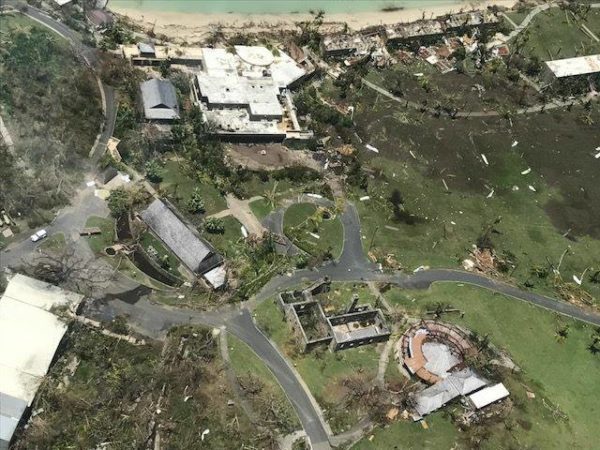
Additionally, there is a virtual Community Learning Session today at 5:30PM EST in which NPS officials will provide an overview of the draft report and findings. You can join the meeting on your computer or phone with this link or by calling for audio only. The call in number is 1-202-640-1187 and the conference ID is 872 808 560.
First, a bit of background:
Caneel Bay Resort has been continuously operated by private businesses since 1956 and, since 1983, under a Retained Use Estate Indenture Agreement (RUE) with the National Park Service (the landholders). The RUE was set up by Rockefeller and expires after a forty year term on September 30,2023. CBI Acquisitions has been the oversight company of the resort since 2004. In 2017 the resort was mostly damaged or destroyed by Hurricanes Irma and Maria and has remained closed with the exception of guest access to Honeymoon Beach and ZoZo’s at Caneel Bay since then.

Here’s a handy timeline that I pulled from the report:
1938: The West Indies Company built seven small rental cottages on the former sugar plantation; the Resort had been developed with a small hotel and eight rental cottages by 1952, when the owner at that time, Rhode Island Charities Trust, sold the property to Laurance Rockefeller (The Daily News of the Virgin Islands, 1976).
1956: Caneel Bay Resort was opened by Laurance Rockefeller’s RockResorts (RockResorts, n.d.) and later became part of the Jackson Hole Preserve, a non-profit organization headed by Rockefeller.
1983: Jackson Hole Preserve donated the 150 acres of resort “land to the U.S. government subject to a 40 year Retained Use Estate Indenture Agreement (RUE)” (NPS, 2013). RockResorts/The Jackson Hole Preserve continued to operate the Resort.
1986: RockResorts was sold to CSX Corporation (RockResorts, n.d.), which continued to operate the Resort.
1989: RockResorts was sold to VMS Realty, via a loan from Bankers Trust, which foreclosed on the Resort shortly thereafter (Kerch, 1991). The RUE was transferred to Bankers Trust in 1989 (NPS, 2013).

1993: Rosewood Hotels and Resorts began managing the Resort (Lohr, 2013).
1998: Bankers Trust was acquired by Deutsche Bank (Andrews, 1998).
2004: EHI Acquisitions (EHI), a CBIA affiliate, purchased the RUE from Deutsche Bank (Business Wire, 2004). Rosewood Hotels and Resorts continued to manage the Resort (Lohr, 2013).
2014: EHI/CBIA did not renew the management contract with Rosewood Hotels and Resorts and began managing the Resort (Lohr, 2013). The RUE status did not change.
2017: Hurricanes Irma and Maria caused significant damage to the resort, leading to its closure through at least 2021.
So, that’s where we are now.
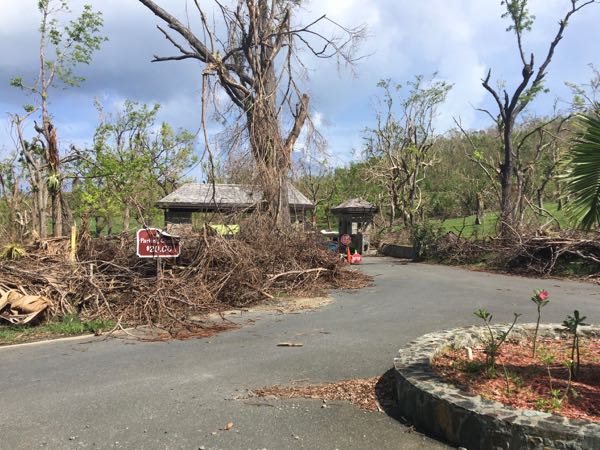
In 2012, 2014 and 2017, a series of Environmental Assessments of potentially hazardous waste were conducted by NPS with the third being a Removal Site Evaluation (RSE).
After assessing possible contamination related to the Resort as part of a real estate process related to the RUE expiration, in 2017, NPS conducted a Removal Site Evaluation (RSE) pursuant to the Comprehensive Environmental Response, Compensation, and Liability Act (CERCLA) (3E Consultants, 2017). The purpose of the RSE was to evaluate conditions and assess the threat posed by the release or threatened release of hazardous substances to the environment. The RSE included a review of available information about the Resort operations, review of earlier assessments, and a visit to the Resort to observe conditions (no sampling or laboratory analysis was included). The RSE report concluded that a non-time-critical removal action should be initiated to assess potential soil and groundwater contamination related to three general areas that included engineering, maintenance, and landscaping operations surrounding the former generator, the wastewater treatment plant, and landfill.
NPS, according to their report, was unable to complete these studies due to “access constraints.” Finally, in February of 2021, NPS finished their site assessments and released that full report today. For more background on the initial studies, please read the article we posted in October of last year that analyzes the Friends of Virgin Islands National Park stance on the popular resort, the legal filings of St. John resident, David DiGiacomo and a summary of the earlier reports.

Later in 2020, DiGiacomo wrote a letter to NPS expressing his concerns and adding to their samplings for the final report.
“In 2020, NPS received a letter from a member of the public (DiGiacomo, 2020) identifying a number of potential environmental concerns related to the Resort and the property. Most of the concerns raised in the 2020 letter were addressed in the original Sampling and Analysis Plan (SAP); however, the field sampling program was adjusted to help address some of the additional concerns that were raised.”
This latest and final report affirms many of DiaGiacomo’s concerns with findings of Arsenic, DDT, petroleum and other chemicals that could present danger to human health and the health of the surrounding land and aquatic environments. But, he is concerned that there isn’t much of an action plan in place and that these reported findings are just the “tip of the iceberg.”
For example, he alerted them to possible buried waste near the water catchment facility on the property based on his interviews with former employees. “It is rumored that employees were told to go up to that area with a backhoe at night to bury things,” he said in his letter.
NPS revealed in their report that, following his recommendation to investigate the area, they uncovered a 22 foot by five foot container buried two feet under the ground via a ground penetrating radar and electromagnetic induction survey. The report does not reveal next steps for reveling the contents of this container.
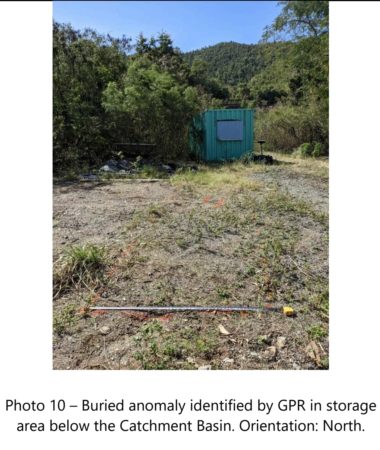
Additionally the once thriving resort on St. John’s North Shore is home to cultural and archeological artifacts dating back thousands of years. The sugar mill ruins of the plantation era that represent the dark history of slavery on island are apparent to the naked eye, but remnants of the Taino people also linger on the property. All of this needs to be further studied in order to protect these artifacts during a potential future clean up of the contaminants on the property.
“How much they haven’t addressed?” he wondered. “This comes no where near being a comprehensive analysis and proposal for clean up.”
The recent report is derived from soil and water samples taken from three different areas that. combined, make up 8 acres of the 150 acre resort:
Area 1

Area 1 is a .8 acre gravel area near the wastewater treatment plant where equipment and machinery were stored. The space includes a pump house that was partially destroyed prior to 2021, a small laboratory and an office building. A notable finding from soil collection is arsenic contamination “above human health-based risk levels based on a potential future residential land use scenario.” The conclusion drawn is that more background data needs to be collected in order to assess the clean up at Area 1.
Area 2

Area 2 is a 5.4 acre area where maintenance, landscaping and vehicle refueling took place. Office and maintenance buildings still stand here. Soil samples and one water sample from an existing ground water monitoring well were taken. In addition, the investigators also drilled in soil near the fuel dispenser pump.
What they found in Area 2 were elevated levels of certain pesticides, that “may pose unacceptable ecological risk and human health risk, specifically to a resident or future worker.” They also found similar levels of arsenic to that found in the samples collected in Area 1 as well as barium and dieldrin.
A paved drainage channel along the northern side of the selected acreage could allow for these chemicals to be carried into the ocean during a rain storm.
Removal action is required.
Area 3
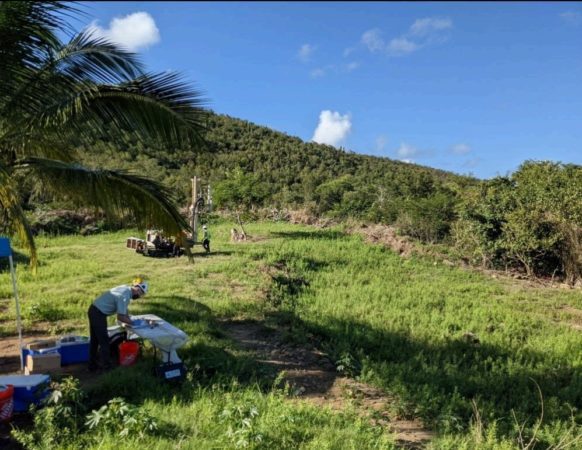
Area 3 is a 1.5 acre plot of land that is home to the former landfill just to the east of Honeymoon Beach. The investigators collected soil samples and installed a ground water monitoring well for future sampling. The findings from these collections show remnants of waste collected in the landfill without “proper containment measures.”
“A permitted landfill would now require a liner, leachate collection, and monitoring for contaminant movement.”
At the landfill, the investigators found a mixture of benign organic materials, plastics, metals, and CERCLA hazardous substances, including the pesticide DDT and polychlorinated biphenyls (PCBs) and noted that the ecological risk from pesticides and metals are “above acceptable levels.
In addition to normal runoff, the wall of the landfill facing honeymoon beach is showing signs of erosion and if there is future impact of a storm, it could increase the chance of that wall to give way. Removal action is required.
So, what happens now?
Well, a SLEW of laws and regulations that are applicable to a circumstance like this…pages of them…have been notated on pages 49 to 74 of the report. But, the question remains, “What are they going to do about it?”
According to the report, there are findings of Asbestos in the piping that “appears to be connected to an existing piping network.” DiGiacomo sited that, similar to the discovery of asbestos piping at Cinnamon Bay that has taken over a year and $1 million to correct, Caneel Bay likely follows that trend. And it would probably cost millions to correct. Although the asbestos is listed in the report, there are no allowances in regards to correcting it.
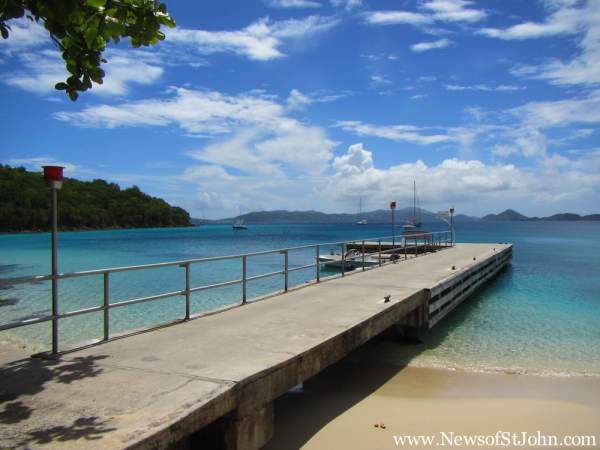
So, my next obvious question for David was, “Who is responsible for this mess?” I pondered that maybe the management companies over the course of the RUE should be jointly and equally held accountable. According to David, the Federal law says yes. But how many of them are still in existence? And would NPS ACTUALLY demand that Rock Resorts to pay up?
He contends that although the current management company, and the management companies that came before them, have made millions in profit from this once idyllic resort, it will likely fall on NPS to correct, and pay for, these problems.
As I mentioned in the start of this, this report is huge and there is so much more information to dig through in regards to it. I urge you all to take a look at the full report and tune in for the NPS presentation at 5:30 today. NPS will follow the release of the report with a request for and submission of public comment as well. You can submit an email to the public comments here and attend the virtual seminars on June 10 or June 24 here.


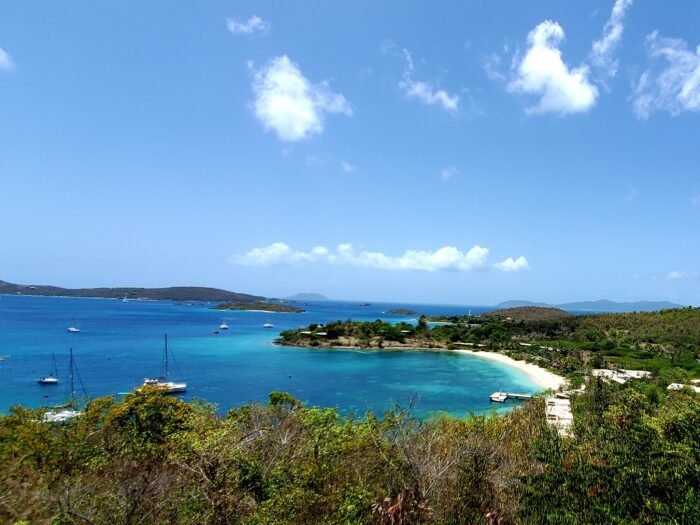
Thank you, Hillary for your hard work looking in to this 100-page
report. Your summary was informative and most welcome.
It will be a sin if the NPS does not end the RUE and take control in 2023. And the companies who polluted and damaged the land need to be held accountable. They should NOT be given an extension in exchange for paying a small fee to help with cleanup.
Mr. DiGiacomo owns a home on St. John. Does he rent his home? Does he stand to gain financially the longer the Caneel Bay resort remains closed?
Caneel Bay employed 100+ local people when operating. The longer the resort remains closed, the longer the unemployment situation continues.
Get the environmental issues addressed, rebuild the resort, and lets get back to work. No need to delay and extend the pain and suffering for years.
currently there is no unemployment on St. John. Actually it is hard to find workers.
According the the website linked below, the unemployment rate for the last month shown, Feb 2021, is over 9% for St John and St Thomas.
http://usviber.org/wp-content/uploads/2016/11/Civilian-unemployment-rate-feb-2021-1.pdf
Thank you for excellent report, the National Park is the only one that deserves this land and will take care of it. The companies should pay for cleanup but how many are still in business or have legally taken a pass. This beautiful land must be saved for the people of St John and all people to see and enjoy, one of must beautiful places on earth.
It actually hurts my stomach reading all of this. And, it’s sci-fi eerie to see these pictures. Like a movie where everything is covered as nature took back over it all. I used to work here in the 80’s. It was such a gorgeous place on so many levels. This just makes me very sad.
I have heard many people talk about the beauty and specialness of Caneel Bay. But it goes back to the old saying of not everything is as it seems. On the surface it was beautiful, but behind the scenes decision makers were trying to bury ugliness. And lies never stay buried not matter how far down you put them. Greed gets in the way of doing the right thing. Let’s hope that this treasure is cleaned up and cared for with a conscience for nature
Why would CBI even be considered in a new lease? They have shown what they are all about. Profit & disreguard for the environment.
The items listed in the report are nothing less than criminal. Past history of this type of disregard for environmental laws has sent many high paid corporate executives to prison. The expectation of accountability should not only be financial, but criminal charges to the fullest extent should be part of the accountability!
The site will remain in limbo for a long, long time if they wait to determine who’s at fault and then wade through all the litigation.
The NPS should clean up the site- including contamination, demolish all the damaged structures, and turn it into a park with access for all of us (taxpaying owners) to enjoy.